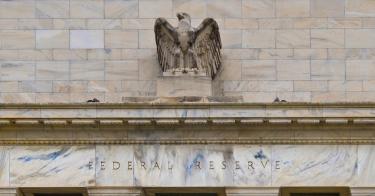In response to the Great Recession of 2007, politicians resorted to their favorite pastime: recklessly spending other people’s money.
Instead of dealing with the real issue—runaway government spending and power—we quietly traded the specter of a debt crisis for the slow burn of an inflation crisis. Today, however, we have both. Instead of casting the money printers into the fire, the Federal Reserve revved them up and paved the way to the present economic crisis.
With the debt ceiling debate, we have the same choice before us today—and we may not get a third chance to save the country. This time, we must push for robust spending cuts and begin dismantling the woke and weaponized federal bureaucracy.
At this critical moment, it’s vital to be clear about exactly how our upward spending spiral imperils the well-being of each and every American household and worker.
It is easy to point to what governments support. It is much harder to picture all 130 million households whose hard labor is siphoned off to support that government. It’s even harder to point to the entrepreneur who will never go into business or the innovator who will never discover a technological breakthrough because of this siphoning.
Hard as it may be to see these missed opportunities and their costs, they are the very real results of ever-expanding government. Regardless of whether a government funds itself through taxes, borrowing, or creating money, it’s at the expense of your future and you being able to use most of the money you earn.
The Left has now successfully used every method to fund its priorities and reshape our society. Once federal taxes reached a large share of the economy, depressing real wages and job opportunities, the government shifted to a less transparent funding mechanism: borrowing.
When a person or business takes out a loan, their borrowing is limited by their earnings from providing real value for other people. Government borrowing, however, is only limited by how much of the fruits of your labors it will take in the future.
That’s why governments don’t really “borrow”—government debt ultimately comes out of your wallet through future taxes or inflation. When governments use this unmatched power, they also crowd out private borrowing. This means families can’t get a mortgage and businesses can’t expand and provide new job opportunities or invest in innovation.
A debt crisis happens when a government has borrowed so much that it has sucked the oxygen out of financial markets. This process starves the economy, adding the government’s arbitrary demand for funds to the legitimate needs of the people. As a result, this sends interest rates skyward, creating an increasing interest cost spiral for the government and cratering economic activity. This is when we run into the other limit on government borrowing—when it has bled the nation dry, and investors finally lose confidence in the government and nation.
There is, on paper, an easy solution for governments: to create the money they borrow. However, as with any solution that seems easy on paper, this one hides a brutal deal with the devil.
The Fed kicked off our inflationary spiral in 2008 when, with federal crowding-out of borrowing on the path to a breaking point, the Fed stepped in to start the most insidious redistribution of wealth from the people to the government: the creation of money out of thin air.
This money creation always sets off a cancerous inflation as the new money, divorced from the real production of goods and services, quietly enters the system and begins to unravel the delicate relationships that make up our economy.
By muddying the value of the dollar that we use to measure economic activity, this blinds us to what is happening. The price level is only the tip of the iceberg. What flies under the radar is the distortion of economic activity away from what is truly productive and toward what the government wants.
In a desperate attempt to cover federal deficits between 2008 and 2021, the Fed increased the monetary base (i.e., printed more money) by more than 650%, while the nominal gross domestic product (the annual sum of all the goods and services produced within the nation’s borders) only grew by 63%—a classic inflationary case of more dollars chasing fewer goods and services.
By December of 2021, 87% of all U.S. government-issued dollars had been created as recently as 2008—with nearly half having been created in the first two years of the coronavirus pandemic. That sent inflation rates to 40-year highs and caused the Fed to panic and stop covering federal deficits by slamming on the monetary brakes—in other words, by stopping printing new money and increasing interest rates to attempt to slow down inflation.
With federal deficits at record levels and no new money being pumped into the system, interest rates spiked as the government aggressively crowded out the ability of the private sector to borrow. In just 10 months, mortgage rates spiked from 3% to over 7%, adding over $330,000 to the lifetime interest costs of a mortgage on an average home.
In short, the Fed is holding the wolf by the ears. Any attempt to tame inflation will starve the economy as the government has its fill at the buffet. Any attempt to ease the government’s crowding-out of borrowing means inflation continues to grow and imposes an indirect but very harsh “tax” on American families. The Fed has lost control because of the magnitude of money—your money—the government is spending.
Instead of buying us time, the Fed’s 2008 trade of a debt crisis for an inflation crisis boiled the frog in the pot.
The only solution to a government that demands more and more of the fruits of your labors is to cut government spending and power.
We must undo these layers of increasingly less transparent theft from hard-working Americans. We are facing $20 trillion in new projected federal deficits over the next 10 years—$150,000 per household, with the debt already becoming like American families’ second mortgage at $250,000 per household.
The solution cannot be to simply trim the growth rate of government or to cut a meager $12 billion off next year’s spending levels, as the current version of the debt ceiling bill would do. This bill would suspend the debt limit for almost two years, handing a blank check to President Joe Biden and committing—for all the world to see—to an unaltered course straight to economic oblivion.
The debt ceiling was intended to be an indispensable tool to safeguard the American people against such abuses. It’s time we finally use it to boldly dismantle decades of reckless government expansion that continues to suffocate the American people and their economy.
This piece originally appeared in The Daily Signal




